Site Search
- resource provided by the Forum Network Knowledgebase.
Search Tip: Search with " " to find exact matches.
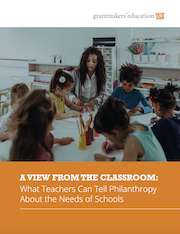
What can over a million teachers tell us about the needs of schools? This report digs into the data from 1.8 million teacher requests on the crowdfunding site DonorsChoose to tell the story from inside today's classrooms. We feel this data provides a roadmap for funders seeking to support students directly, but also for funders seeking broader reform of U.S. education policy and systems.
Funding Indigenous Peoples: Strategies for Support, looks at how funders collaborate with and bring support to indigenous communities around the world. Through examples from a diverse range of foundations, this guide explores how grantmakers work with indigenous peoples, the approaches they take, and the practices they find effective.
This guide was developed in collaboration with International Funders for Indigenous Peoples (IFIP).
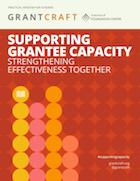
In Supporting Grantee Capacity: Strengthening Effectiveness Together, GrantCraft looks at how funders approach building capacity with grantees. Through examples from foundations ranging in size, mission, and geography, we explore various strategies for capacity building and the types of awareness that funders can choose to incorporate in decision making to facilitate informed, thoughtful judgments about strengthening organizations.
This case study of the Council of Michigan Foundations' Peer Action Learning Network (PALN) is one of six examined in a report from New York University's Wagner Research Center for Leadership in Action, commissioned by Grantmakers for Effective Organizations. The PALN case study, along with the other five, explores the power of learning communities to build connections and knowledge to increase organizations’ community impact. It explains ways grantmakers can strategically support these efforts as well as key elements for designing learning communities, executing for success and extending the learning.
Right Size Applications; Simplify Reporting
Affirmation: Paperwork hinders us all.
Duplicative or complex proposal and reporting requirements divert time and resources for both nonprofits and philanthropy, needlessly burdens nonprofit partners and siphons scarce resources away from where they are most needed. Funders can lessen the burden on grantee partners by streamlining the application and reporting processes, especially for repeat grantee partners; decreasing the required data to only the most necessary for decision-making; taking on some of the burden of data collection by gathering data from central repositories such as Candid (formerly GuideStar) and the IRS; and retain and use data already collected from repeat grantees. Funders should require updated information such as annual budget, staffing, board member changes, etc., in their grant applications only when the nonprofit is the only source for this information. Collaborate with other local funders and agree to common GOS application questions and budget templates; streamline tools through technology and offer innovative ways for organizations to apply for and report out on grants; limit written requirements to information that is relevant to the request, and which moves the needle on critical social issues.
Activities
• Reduce rigidity and increase the flexibility of what nonprofits must submit for their applications in creative, egalitarian, and less burdensome ways.
• All funders right-size their application and report requirements relative to the grant amount.
• Shift from reports to conversations or other lower time-intensive means.
• Develop agreed-upon common questions for use across the philanthropy sector for general operating support grant applications.
• Explore the efficacy of using common applications for general operating support grants.
• Change site visits for compliance to goals of learning.
• Consider developing a central data repository for New Jersey nonprofits and funders, where applicants can submit and update basic information once a year, and funders can access the necessary information.
Outcomes
• 75% of funders begin to reduce the size of applications and reports relative to the size of the grant.
• 75% of funders shift from reports to conversations or other lower time-intensive means, like site visits geared to learning and relationship building.
• 50% of funders making general operating support grants accept creative, egalitarian, less burdensome applications including other funders proposals.
• Nonprofits have increased capacity to dedicate time to other activities and efforts.
How to Begin Doing Good Better on Reducing Burden
Learning opportunities
• For funders who do not right-size their applications, what are the barriers to reducing paperwork?
• Who is making the decisions about the application and reporting requirements, and how can they be reached to encourage change? How can we involve more board members of funders in this effort?
• For funders who require reports, determine what is “nice to have” vs. what is needed and used and consider eliminating the rest; what are expeditious ways to collect data including accepting other funders’ reports?
• Which funders who make multi-year grants require a full application for the first year and updates for subsequent years?
Pre-Work
• For funders who already report tailoring their applications, consider how to further simplify processes for grantees; share these practices with other colleagues in philanthropy.
• Learn how information is collected without burdening the applicant.
• Review and implement recommendations already provided by nonprofit networks and philanthropy-serving organizations for concrete examples such as centralized document repositories; allowing nonprofit partners to re-use other proposals and reports; holding check-in meetings in lieu of written reports; and other helpful practices.
• Seek promising practices of funders who use site visits as opportunities to build trust and understand the programs and organizations they support instead of as compliance reviews.
Notes:
See, for example, SMU DataArts (formerly the Cultural Data Project), https://culturaldata.org, a nationwide research and data repository for the arts and cultural community. DataArts serves as a collector and clearinghouse for a wide array of data, which funders can access instead of requiring nonprofits to provide it separately.
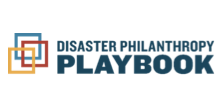
The Sustained Collaboration Network has published a comprehensive guide for funders and nonprofit to guide organizations through the various step of collaborations. Ranging from Executive Transitions, to Mergers and Aliiances, to even an organization deciding to close its operations, the guide offers insights, strategies, and templates to navigate tough choices and keep any discussion moving forward. About the Sustained Collaboration Network: A national network of sustained collaboration funders has one goal in mind: Helping nonprofits, large and small, get the help and support they need to collaborate. Dedicated to bringing technical support and funding to nonprofits from acquisitions and mergers to strategic partnerships and collaboration – they walk nonprofits and funders through the entire journey.
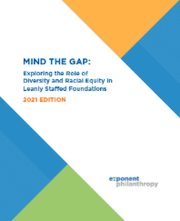
This survey shows a clear relationship between a focus on racial equity and good grantmaking and governance practices. Even though a growing number of funders are focusing on racial equity, foundation boards and staff lack racial diversity. To be powerful allies in the movement for racial equity, leanly staffed foundations must evaluate themselves first.
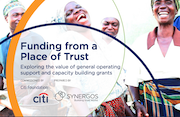
Synergos, a global nonprofit organization that brings people together to solve complex challenges like poverty, published this report that “explores how the provision of general operating support and capacity building can help [funders and] donors improve the impact of nonprofit organizations and in turn the communities they serve.”
This article written by Kerry McHugh Vice President and Program Officer at the Helen J. Serini Foundation, an independent foundation located in Maryland, offers ten things to do when meeting with a prospective grantee. She encourage funders to think of these interactions as relationship-building rather than a transaction.
A User's Guide to Advocacy Evaluation Planning was developed for advocates, evaluators, and funders who want guidance on how to evaluate advocacy and policy change efforts. This tool takes users through four basic steps that generate the core elements of an advocacy evaluation plan, including what will be measured and how.

